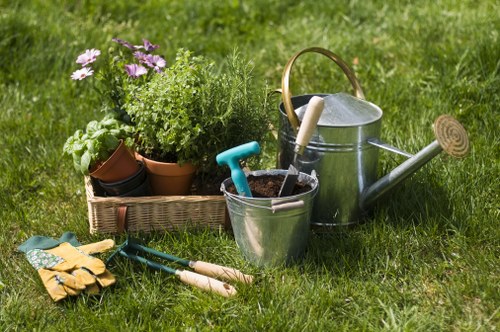Upholstery Cleaner in Home Cleaning

Maintaining a clean and healthy home environment goes beyond just sweeping floors and wiping surfaces. One of the often-overlooked aspects of home cleanliness is the care of your upholstery. Whether it’s your favorite sofa, dining chairs, or upholstered mattresses, these fabrics accumulate dirt, allergens, and stains over time. Investing in a professional upholstery cleaner can transform your living spaces, extending the life of your furniture and enhancing the overall aesthetic of your home.
Upholstery cleaning is not merely about appearance; it plays a crucial role in ensuring a hygienic household. Regular cleaning removes dust mites, bacteria, and other microorganisms that can lead to health issues. Additionally, professional cleaning services utilize specialized equipment and eco-friendly cleaning solutions that are both effective and safe for your family and pets.
Choosing the right upholstery cleaner involves understanding the types of fabrics you have, the cleaning methods available, and the specific needs of your household. From delicate silk sofas to heavy-duty leather chairs, each material requires a tailored approach to achieve the best results without causing damage.

The Importance of Upholstery Cleaning
Upholstery fabrics act as magnets for dust, dirt, and allergens. Without regular maintenance, these particles can become embedded deep within the fibers, making them difficult to remove with standard cleaning methods. Here are some key reasons why upholstery cleaning is essential:
- Health Benefits: Removing allergens such as dust mites and pet dander can significantly improve indoor air quality and reduce allergy symptoms.
- Enhanced Appearance: Regular cleaning keeps your furniture looking fresh and vibrant, preventing discoloration and wear.
- Prolonged Furniture Life: Proper maintenance helps preserve the integrity of the fabric and structure, extending the lifespan of your upholstery.
- Odor Elimination: Eliminating trapped odors ensures your home maintains a pleasant and inviting atmosphere.
Neglecting upholstery care can lead to irreversible damage, costly repairs, and the need for premature replacement of furniture. Professional upholstery cleaning addresses these issues comprehensively, providing a long-term solution for maintaining your home’s cleanliness and comfort.
In addition to the health and aesthetic benefits, regular upholstery cleaning can also enhance the resale value of your furniture. Well-maintained pieces are more attractive to potential buyers, offering better returns on your investment.

Types of Upholstery Fabrics and Their Cleaning Requirements
Different upholstery fabrics require specific cleaning methods to avoid damage and ensure effective results. Understanding the type of fabric you have is the first step in selecting the appropriate cleaning technique.
1. Natural Fibers
Natural fibers such as cotton, linen, and wool are popular choices for upholstery due to their durability and comfort. These fabrics are generally easier to clean but can stain easily if not treated promptly.
- Cotton: Resistant to wear and tear, cotton fabrics are easy to spot clean with mild detergents.
- Linen: Linen upholstery benefits from regular vacuuming and prompt treatment of stains to maintain its appearance.
- Wool: Wool is naturally stain-resistant and durable, requiring less frequent cleaning but benefiting from professional deep cleaning to preserve its texture.

2. Synthetic Fibers
Synthetic fabrics like polyester, nylon, and acrylic are known for their resilience and resistance to stains. These materials are ideal for high-traffic areas and households with children or pets.
- Polyester: A highly durable fabric that withstands heavy use, polyester is easy to clean with regular vacuuming and spot treatments.
- Nylon: Known for its strength and elastic recovery, nylon upholstery requires minimal maintenance.
- Acrylic: Resistant to sunlight and mildew, acrylic fabrics are suitable for both indoor and outdoor use.
Synthetic fibers often require less intensive cleaning but benefit from periodic professional treatments to maintain their appearance and fabric integrity.

3. Leather and Faux Leather
Leather and faux leather upholstery offer a luxurious and timeless appeal to any home. However, these materials require specialized cleaning to prevent drying, cracking, or staining.
- Leather: Regular conditioning and gentle cleaning with appropriate leather cleaners help maintain suppleness and prevent damage.
- Faux Leather: Easier to clean than genuine leather, faux leather can be wiped down with mild soap and water solutions.
Professional cleaning services for leather involve deep cleaning and conditioning, ensuring that the material remains soft and retains its sheen over time.
Understanding the unique requirements of each upholstery fabric ensures that the cleaning process is both effective and safe, preserving the beauty and functionality of your furniture.

Common Upholstery Stains and How to Treat Them
Accidents happen, and upholstery stains are a common issue in many households. Knowing how to address different types of stains is crucial in maintaining the appearance and integrity of your furniture.
1. Food and Beverage Stains
Spilled liquids like coffee, wine, and juice can leave noticeable stains on upholstery. Immediate action is essential to prevent the stain from setting.
- Blot: Gently blot the spill with a clean, absorbent cloth to remove as much liquid as possible.
- Use a Cleaning Solution: Apply a mixture of mild detergent and water to the stained area, dabbing gently until the stain lifts.
- Rinse: Remove any residue by wiping the area with a damp cloth and allowing it to air dry.
2. Pet Stains
Pets can introduce stains and odors to your upholstery. Addressing these promptly can prevent long-term damage.
- Aspiration: Remove solid waste immediately using appropriate cleaning tools.
- Cleaning: Use enzymatic cleaners designed to break down organic stains and eliminate odors effectively.
- Sanitizing: Ensure the area is thoroughly sanitized to prevent bacterial growth.
3. Ink and Dye Stains
Ink spills require specialized treatment to prevent permanent discoloration.
- Isolate: Place a paper towel beneath the stain to prevent spreading.
- Alcohol-Based Cleaner: Apply isopropyl alcohol to a cloth and gently blot the ink stain.
- Rinse and Dry: Remove any cleaning solution residue and allow the area to dry completely.
For persistent or extensive stains, seeking professional upholstery cleaning services is recommended to restore the fabric without causing damage.

Professional Upholstery Cleaning Methods
Professional upholstery cleaners employ various techniques to ensure deep and effective cleaning. The most common methods include:
1. Steam Cleaning
Steam cleaning uses hot water extraction to remove dirt and stains from upholstery. This method is highly effective for most fabrics and can kill bacteria and mites due to the high temperatures involved.
- Advantages: Deep cleaning, sanitization, and effective stain removal.
- Best For: Cotton, polyester, and other durable fabrics.
2. Dry Cleaning
Dry cleaning involves the use of chemical solvents instead of water to clean upholstery. This method is ideal for delicate fabrics that may be damaged by moisture.
- Advantages: Suitable for a wide range of fabrics, quick drying time.
- Best For: Silk, wool, and other sensitive materials.
3. Foam Cleaning
Foam cleaning utilizes a foam-based solution to lift dirt and stains from upholstery. The foam is then vacuumed away, taking the contaminants with it.
- Advantages: Minimal moisture, reduced risk of mold and mildew.
- Best For: Fabric blends and synthetic materials.
4. Encapsulation
Encapsulation cleaning involves applying a polymer solution that crystallizes around dirt particles, making it easy to remove them with a vacuum.
- Advantages: Low-moisture cleaning, energy-efficient.
- Best For: High-traffic areas and commercial upholstery.
Each cleaning method has its unique benefits and is chosen based on the specific needs of the upholstery material and the extent of dirt or staining.

Benefits of Hiring a Professional Upholstery Cleaner
While DIY cleaning methods can be effective for minor stains and regular maintenance, hiring a professional upholstery cleaner offers numerous advantages that ensure the best possible care for your furniture.
- Expertise: Professionals have extensive knowledge of different fabrics and the appropriate cleaning techniques for each type.
- Advanced Equipment: Access to high-grade cleaning machinery that delivers a deeper clean than standard home appliances.
- Time-Saving: Professional services can complete cleaning tasks more efficiently, allowing you to focus on other aspects of home maintenance.
- Stain Removal: Experts can tackle stubborn and old stains that are challenging to remove with DIY methods.
- Protective Treatments: Many professionals offer fabric protection services that help repel future stains and extend the life of your upholstery.
Investing in professional upholstery cleaning not only enhances the appearance and longevity of your furniture but also contributes to a healthier living environment by effectively removing allergens and contaminants.
Additional Services Offered by Professionals
- Fabric Protection: Applying protective coatings that guard against future stains and spills.
- Odor Neutralization: Eliminating persistent odors from sources like pets, smoke, and cooking.
- Repairs and Maintenance: Addressing minor damages such as loose threads or minor tears during the cleaning process.
These additional services provide comprehensive care for your upholstery, ensuring that your furniture remains in optimal condition for years to come.

Choosing the Right Upholstery Cleaning Service
Selecting a reputable and reliable upholstery cleaning service is crucial to achieving the best results. Here are some factors to consider when making your choice:
1. Experience and Expertise
Look for companies with a proven track record and extensive experience in upholstery cleaning. Experienced professionals are more likely to handle various fabric types and stain removal challenges effectively.
2. Cleaning Methods and Solutions
Ensure that the cleaning service uses appropriate methods and eco-friendly solutions that are safe for your family and pets. Inquire about the techniques they employ and whether they tailor their approach to different fabrics.
3. Customer Reviews and Testimonials
Research customer feedback to gauge the quality of the service. Positive reviews and testimonials indicate reliability and customer satisfaction.
4. Certification and Insurance
Choose services that are certified by recognized industry organizations and carry insurance. This ensures professionalism and provides protection in case of accidental damage during the cleaning process.
5. Pricing and Value
Compare pricing structures and ensure that you’re getting good value for the services offered. While it’s important to stay within your budget, prioritizing quality over cost can lead to better long-term results.
By carefully evaluating these factors, you can select an upholstery cleaning service that meets your specific needs and ensures the longevity and appearance of your furniture.
Questions to Ask Potential Cleaners
- What cleaning methods do you use?
- Are your cleaning solutions safe for children and pets?
- Do you offer any guarantees or warranties on your services?
- How do you handle delicate or antique fabrics?
- Can you provide references or examples of past work?

Preventative Measures to Maintain Upholstery Cleanliness
Maintaining clean upholstery doesn’t solely rely on periodic professional cleaning. Incorporating regular upkeep practices can significantly reduce the frequency and intensity of cleaning required.
1. Regular Vacuuming
Vacuum your upholstered furniture at least once a week using a vacuum cleaner with a HEPA filter. This helps remove surface dust, pet hair, and other debris that can accumulate quickly.
2. Immediate Stain Treatment
Attend to spills and stains as soon as they occur. Blot the area with a clean cloth and apply a suitable stain remover to prevent the stain from setting.
3. Use of Fabric Protectors
Applying a fabric protector can create a barrier against spills and stains, making it easier to clean your upholstery and prolonging its life.
4. Rotate Cushions
Regularly rotating and flipping cushions can help distribute wear evenly, preventing sagging and maintaining the shape of your furniture.
5. Minimize Sun Exposure
Excessive sunlight can cause fading and weakening of upholstery fibers. Use curtains or blinds to limit direct sunlight exposure, preserving the color and integrity of your furniture.
6. Maintain a Clean Environment
Reducing the overall dust and dirt in your home through regular cleaning helps keep your upholstery cleaner for longer periods. Consider using doormats and encouraging a no-shoes policy indoors to minimize dirt accumulation.
Implementing these preventative measures not only keeps your upholstery looking pristine but also reduces the need for more intensive cleaning services, saving you time and money in the long run.
Consistent maintenance and timely intervention are key to preserving the beauty and functionality of your upholstered furniture, ensuring it remains a comfortable and stylish part of your home for years to come.

Eco-Friendly Upholstery Cleaning Options
As environmental consciousness grows, many homeowners seek eco-friendly upholstery cleaning solutions. These methods prioritize safety for both your household and the planet without compromising on effectiveness.
- Natural Cleaning Solutions: Utilizing ingredients like vinegar, baking soda, and essential oils provides a safe and non-toxic alternative to chemical cleaners.
- Green Cleaning Products: Many professional cleaners now offer eco-friendly products that are biodegradable and free from harmful chemicals.
- Low-Water Techniques: Methods such as encapsulation and dry cleaning reduce water usage, decreasing the environmental impact and promoting sustainability.
- Energy-Efficient Equipment: Using equipment that consumes less energy contributes to a lower carbon footprint.
Choosing environmentally responsible upholstery cleaning options not only benefits the ecosystem but also ensures a healthier living space by minimizing exposure to harsh chemicals.
Advantages of Eco-Friendly Cleaning
- Healthier Living Environment: Reduced use of toxic chemicals lowers the risk of respiratory issues and skin irritations.
- Sustainable Practices: Supporting green cleaning services encourages environmentally friendly business practices.
- Long-Term Benefits: Eco-friendly methods often focus on sustainable solutions that provide lasting cleanliness and fabric protection.
Adopting eco-friendly upholstery cleaning practices aligns with a commitment to sustainability and personal well-being, making it a wise choice for conscientious homeowners.
Finding Green Cleaning Services
When searching for eco-friendly upholstery cleaners, consider the following steps:
- Research and identify companies that specialize in green cleaning.
- Verify the certifications and eco-labels that indicate environmentally responsible practices.
- Ask about the specific products and methods used to ensure they meet your eco-friendly standards.
- Read customer reviews to gauge the effectiveness and satisfaction of green cleaning services.
By prioritizing eco-friendly upholstery cleaning, you contribute to a healthier planet while maintaining the cleanliness and comfort of your home.

Cost Considerations for Upholstery Cleaning
The cost of upholstery cleaning can vary based on several factors, including the size of the furniture, the type of fabric, the extent of staining, and the cleaning method used. Understanding these factors can help you budget effectively and choose the best service for your needs.
- Furniture Size and Type: Larger pieces such as sectional sofas may cost more due to the increased time and resources required.
- Fabric Material: Delicate or specialty fabrics may necessitate specific cleaning techniques, influencing the overall cost.
- Stain Severity: Heavily stained or soiled upholstery might require additional treatments, raising the price.
- Location: Service fees can vary based on geographic location and the availability of professional cleaners in your area.
On average, professional upholstery cleaning services can range from $50 to $200 per piece, depending on the aforementioned factors. It’s advisable to obtain multiple quotes and compare the services offered to ensure you receive the best value for your investment.
Cost-Saving Tips
- Regular Maintenance: Keeping up with regular cleaning can prevent severe stains and reduce the frequency of professional services needed.
- Bundle Services: Some cleaning companies offer discounts for multiple items or combined services like carpet and upholstery cleaning.
- DIY Maintenance: Incorporating simple cleaning practices at home can minimize the need for intensive and expensive professional treatments.
- Schedule During Off-Peak Times: Booking services during weekdays or off-peak seasons may result in lower prices.
By understanding the cost factors and implementing strategic measures, you can manage the expenses associated with upholstery cleaning while maintaining the quality and longevity of your home furnishings.

Upholstery Cleaning FAQs
1. How Often Should I Have My Upholstery Cleaned?
It is generally recommended to have your upholstery professionally cleaned every 12 to 18 months. However, factors such as household size, presence of pets, and usage frequency may necessitate more frequent cleanings.
2. Can I Clean My Upholstery Myself?
While minor stains and regular maintenance can be managed with DIY methods, professional upholstery cleaning provides a deeper and more thorough clean, especially for stubborn stains and accumulated dirt that regular cleaning cannot remove.
3. Will Professional Cleaning Damage My Furniture?
Reputable professional cleaners use appropriate techniques and solutions tailored to the specific fabric types, minimizing the risk of damage. It’s important to choose a certified and experienced service to ensure safe and effective cleaning.
4. How Long Does It Take for Upholstery to Dry?
Drying times can vary based on the cleaning method used and the environmental conditions. Generally, steam cleaning may take a few hours to dry, while dry cleaning methods can dry within 30 minutes to an hour.
5. What Should I Do Before the Cleaner Arrives?
Prepare your furniture by removing any loose cushions, toys, or personal items. Inform the cleaner of any specific concerns or stain areas to ensure focused attention during the cleaning process.
If you have additional questions or need personalized advice, feel free to contact us today for expert assistance with your upholstery cleaning needs.

Conclusion
Maintaining clean upholstery is an integral part of home cleaning that contributes to both the aesthetics and healthiness of your living spaces. Professional upholstery cleaning services offer a comprehensive solution to remove deep-seated dirt, stains, and allergens, ensuring your furniture remains beautiful and functional for years to come.
By understanding the different types of fabrics, cleaning methods, and the benefits of hiring experts, you can make informed decisions that enhance the longevity and appearance of your home furnishings. Incorporating regular maintenance practices and choosing eco-friendly cleaning options further supports a sustainable and healthy home environment.
Don’t wait until your upholstery shows significant signs of wear and tear. Invest in professional cleaning services to preserve your furniture and enjoy a cleaner, more comfortable home. Contact us today to schedule your upholstery cleaning service and experience the difference of a professionally maintained home.
Frequently Asked Questions
Get In Touch With Us.
Please fill out the form below to send us an email and we will get back to you as soon as possible.